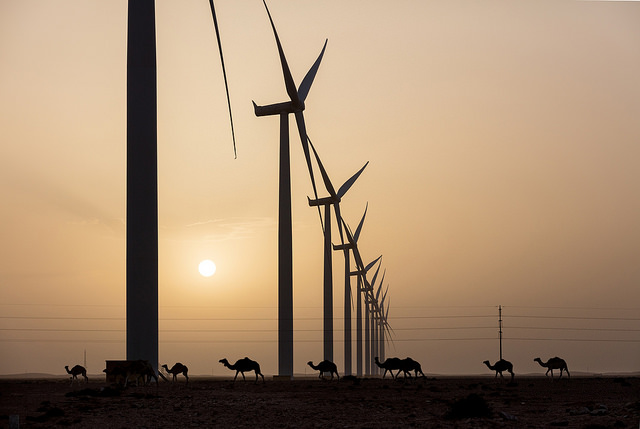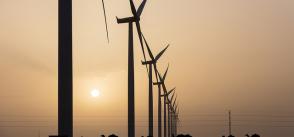
New horizons for renewable energies in Morocco and Africa
Morocco has a strategic location in the North West of the African continent and is only 14 kilometers from Europe, across the Strait of Gibraltar. In addition, it has varied relief — the Atlas and Rif Mountains, the Sahara — and the length of its coasts — the Atlantic Ocean and the Mediterranean Sea constitute 3500 km of coastline.
In the Ouarzazate region in central Morocco, for example, the annual average daily global irradiation on a horizontal surface varies from 3.86 to 7.85 kWh/m2, which means an annual average of 7.9 to 11.2 hours of sunshine per day. Concerning the wind potential, the annual average wind speed, at 10 meters above sea level, for the Tangier zone in the north is 10m/s, but for the Dakhla zone in the Laâyoune-Sakia El Hamra region, it varies between 7 and 8.5 m/s.
Morocco imports more than 96 percent of its energy needs and its electricity consumption increases by about 8 percent per year. For this reason a new energy strategy was adopted in 2009. It is based mainly on the increase in the contribution of renewable energies to national electricity consumption and the development of the clean energy economy. This will enable Morocco to reduce its energy bill and its dependence on energy from abroad, in addition to the limitation of its greenhouse gas emissions, thus contributing to the preservation of the environment.
This strategy has been translated into a road map with specific objectives and detailed work programs in the short and medium term. Morocco has also developed a strategic vision of energy efficiency and resource optimization aimed at achieving a 20 percent less consumption of energy by 2030. This strategy targets the most energy-intensive sectors, in particular transport, building and industry, as well as agriculture and public lighting.
Read the full article by Hassan Nfaoui via Renewable Energy World.
[Photo by TEDxTarfaya | Flickr]







